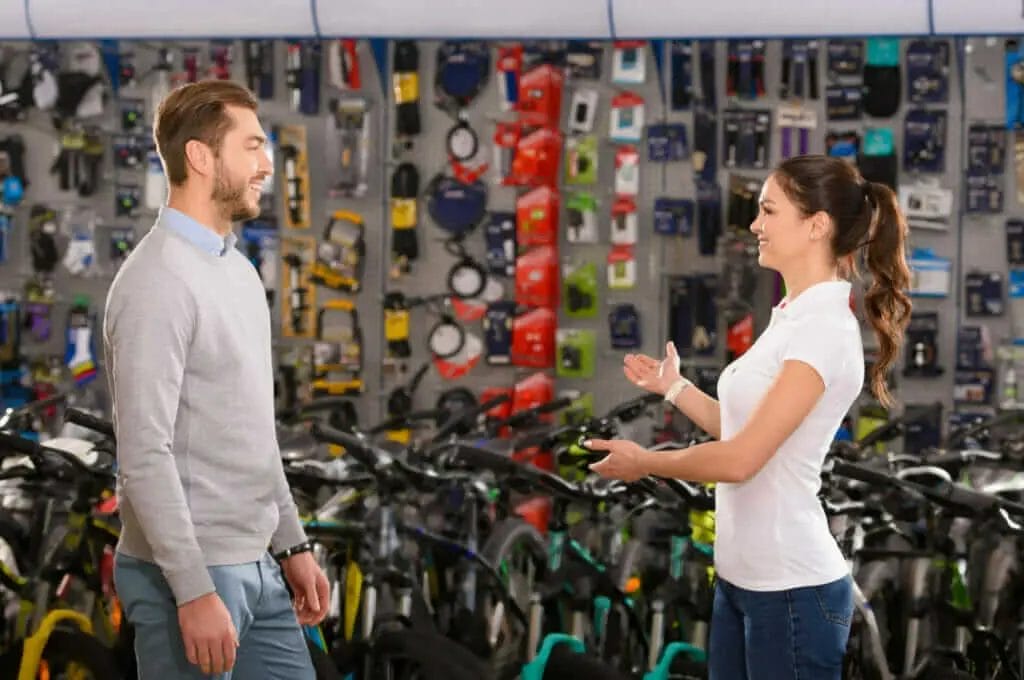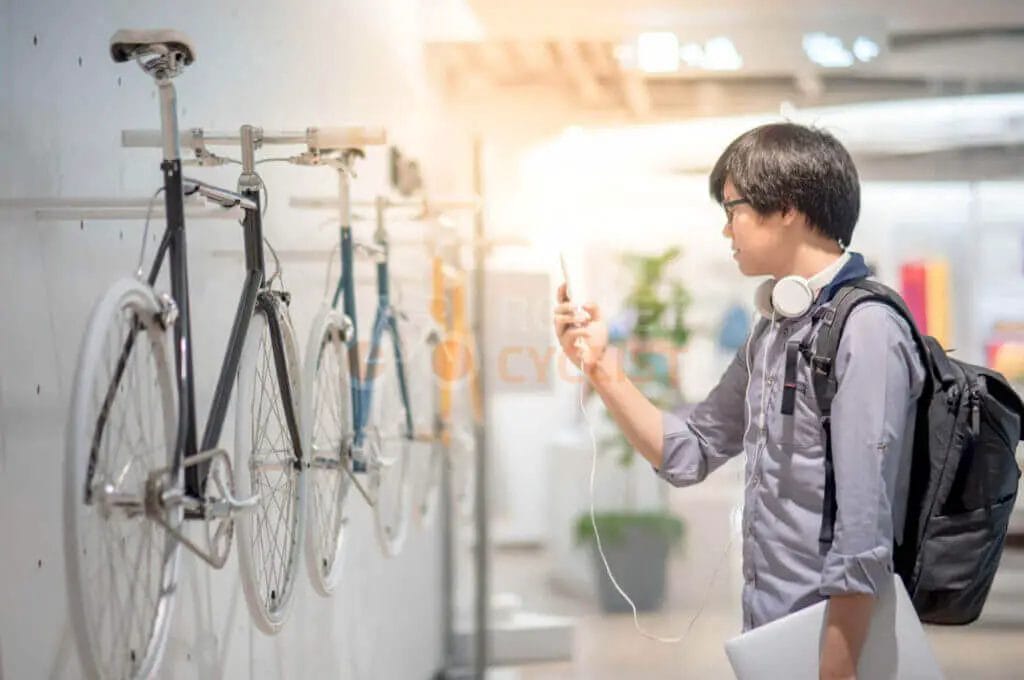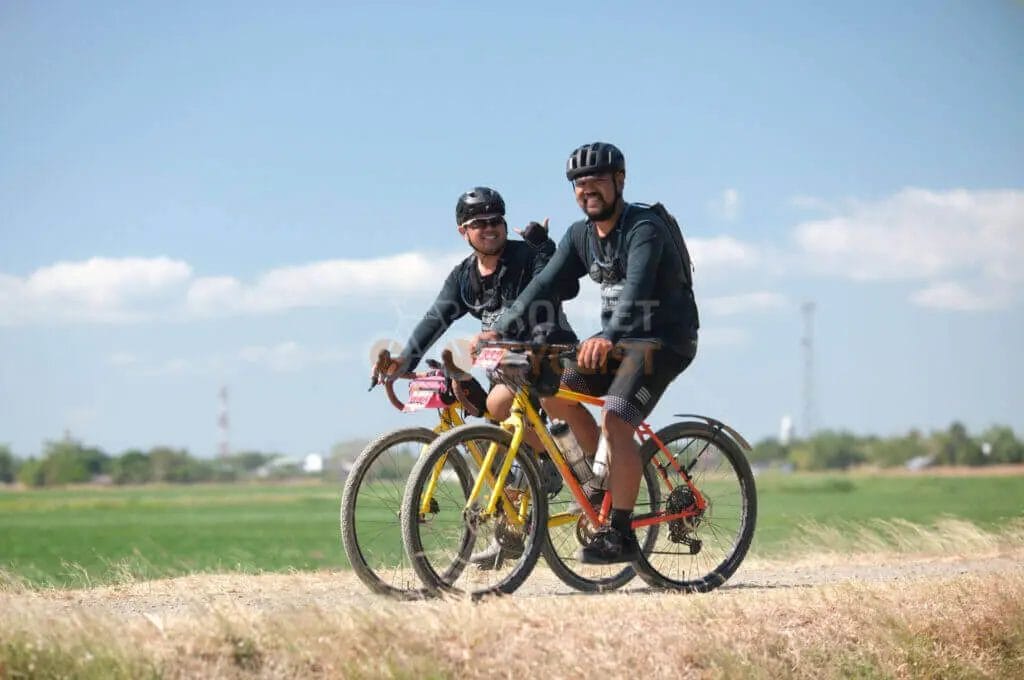Last Updated on March 31, 2024 by Vinson Lozano

Understanding Bike Buying Addiction
Do you find yourself continually purchasing bikes, even when you don’t need them? You might be experiencing bike buying addiction. It’s critical to understand the addiction to tackle it effectively. Let’s delve into what it entails and how you can break free.
What is Bike Buying Addiction: Signs and Symptoms
Bike buying addiction is characterized by the compulsive need to buy bikes, despite already owning one or several functioning bikes. It can extend to bike parts, as well. The symptoms include feeling a rush of excitement when thinking about buying a new bike, spending excessive time researching about bikes, or experiencing restlessness when unable to purchase a new bike. You might also start neglecting other areas of your life to satisfy your cycling cravings. Spotting these signs early can help you control your biking expenditures.
The Psychology Behind Bike Buying Addiction

Understanding the psychology behind bike buying addiction can bring clarity to your behaviors. The rush you feel before and during the purchase of a new bike is due to the release of dopamine in your brain. This “feel-good” neurotransmitter rewards your brain, creating a cycle of pleasure and gratification linked to bike buying.
Recognizing the cycle and the irrationality behind your bike buying addiction is the first step towards overcoming it. It’s crucial to challenge your thoughts and actions related to compulsive bike purchases. Consider seeking advice from a professional, if necessary. Remember, it’s entirely possible to get a grip on your bike buying tendencies and resume a balanced lifestyle. Don’t be too hard on yourself; every step forward is progress.
Creating a Bike Budget
By creating a Bike Budget, you can regain control over your finances while still indulging in your passion for cycling. The first step in curbing your bike buying addiction is to assess your current financial situation. Take a meticulous look at your income and expenses, analyzing where you can allocate funds towards your desired two-wheeled treasures.
By carefully budgeting and prioritizing, you will be able to determine how much money can be comfortably allocated towards new bikes without negatively impacting other aspects of your life. Next, consider setting specific goals for yourself. Are there any particular bikes that have captured your attention?
Create a list of these dream machines and establish milestones that need to be achieved before allowing yourself the pleasure of adding them to your collection. This will give you something tangible to work towards while also instilling a sense of discipline and delayed gratification. In addition, it’s important to explore alternative options before making any impulsive purchases. Rather than buying brand new bikes at full retail price, consider looking into pre-owned or refurbished models that offer great value for money. Not only will this save you some serious cash, but it will also provide an opportunity for unique finds and hidden gems that may not be available on the market anymore.
Lastly, remember that moderation is key. Instead of completely eliminating bike purchases from your life, strive for a healthy balance between fulfilling your passion and maintaining financial stability. Set monthly or yearly limits on bike-related expenses, ensuring that they align with your overall financial goals and responsibilities. By implementing these strategies and diligently following your Bike Budget, you will gradually regain control over your bike buying addiction. Not only will this result in a healthier financial outlook, but it will also allow you to fully appreciate and enjoy each new addition to your collection.
Breaking the Cycle: Steps to Quit Bike Buying Addiction

Recognizing and admitting you have a bike buying addiction is only half the battle, the other half is breaking free from this cycle. Here are three actionable steps you can take:
Identifying Triggers and Temptations
Firstly, identify what triggers your addiction. Do certain environments, situations, or feelings push you towards compulsive bike buying? If so, avoid these triggers. You may be tempted to browse bike shops or online stores during your spare time. If that’s a trigger for you, consider spending that time participating in a different hobby. If the temptation still persists, try to redirect that energy into bike maintenance or improving your cycling skills with your existing bike(s).
Developing a Support System
Next, create a strong support system. This could be family members, friends, or even members of a cycling group who understand your situation and are ready to provide encouragement and assistance. Don’t isolate yourself. Share your struggles with them. Their practical advice and emotional support can be invaluable in overcoming your addiction.
Creating a Bike Budget
Lastly, create a strict budget for your cycling needs. Determine how much money you are able to allocate for cycling each month after covering your essential expenses. This could include bike parts, maintenance, and perhaps even a new bike if necessary. But it should be an amount you can afford without neglecting your financial obligations. Stick to this budget religiously. You’ll discover that this restriction not only helps curb impulsive purchases, but also fosters wise decisions.
Breaking free from bike buying addiction isn’t easy, but with these steps, patience, and determination, you’re well on your way. Remember, you can do this! It’s all about creating balance without removing the joy of cycling.
Finding Alternative Ways to Satisfy the Urge

Exploring Other Hobbies and Interests
Now, you need to divert your attention away from purchasing new bikes. To help accomplish this, you should explore and invest in other hobbies and interests. You have a broad world of activities and pastimes that can take your mind off accumulating more bikes. Exercises like running, swimming, or mountain hiking can not only keep you in shape but also provide a welcome distraction. Alternatively, engaging in artistic pursuits like photography, writing, or painting can ignite a creative spark.
Investing in Upgrading Your Current Bike
Another viable alternative is to invest in upgrading your existing bike instead of purchasing a new one. This can satisfy your need for something new without spiralling into another round of bike hoarding. You can add new components, painting it differently, or adjusting its set-up to better fit your riding style. This will not only give your bike a fresh feel but will also enhance its performance.
Practice Mindfulness and Seek Professional Help if Necessary
Being mindful involves being aware of your actions, thoughts, and feelings. You should practice mindfulness by recognizing when the urge to buy another bicycle starts to creep in. Pay attention to what you’re feeling at that moment. Are you anxious, bored, or stressed? Identify and acknowledge these feelings, then let them pass.
Also, if the addiction persists, don’t shy away from seeking professional help. Therapists or addiction specialists can provide the necessary guidance you need. With their professional advice, you can work towards curbing your bike buying addiction and finding healthier alternatives to spend your time and money on.
Setting Financial Goals and Priorities
In your journey towards overcoming your bike buying addiction, setting financial goals is crucial. It’s not just about halting your spending; it’s about knowing where your money should go. Begin with establishing your financial priorities. This could be paying off debts, saving for a vacation, investing, or building an emergency fund. Envision who you want to be free from your addiction and align your financial actions to achieve this.
Understanding Budgeting
A key aspect of managing your finances is creating a budget. Here, you have to understand your income and expenses, determining what portion goes to necessities, and what you can save. Allocate a part of your budget to your hobbies or interests, but ensure it’s a reasonable amount that doesn’t jeopardize your financial stability.
Implementing the Budget
Now that you’ve created a budget, it’s time to put it into action. Follow through on decisions to tweak your spending habits. It might not be easy in the beginning, but remember, you are striving for financial health and escaping the cycle of addiction.
Tracking and Monitoring Spending
Sticking to a budget requires discipline and constant monitoring of your expenses. Keeping tabs on your spending can offer insights into your purchasing patterns, making you aware of when and why you might feel the urge to buy a new bike. This consciousness is vital in managing impulses to overspend.
Overcoming a bike buying addiction isn’t about ceasing all spending; instead, it’s about gaining control over your financial choices. By effectively creating and implementing a budget, you’re not only working towards spending less on bikes but also investing in a sound
Seeking Professional Help

If you’ve tried the above tips but still struggle with your bike buying addiction, it might be time to consider professional help. Therapists and counselors specifically trained in addictions can provide the tools and support you need to conquer this challenge.
When to Consider Therapy or Counseling
One sign that you might need professional help is if your bike buying habit starts to interfere with your daily life, such as causing you high levels of stress or anxiety, or leading to financial hardship. If discussing your addiction with your loved ones and trying self-help methods have not resolved the issue, this could also indicate that you need professional intervention. Counseling or therapy could arm you with new strategies and techniques for managing your urge to buy bikes, repairing damaged relationships, and restoring your financial health.
Support Groups and Resources
You’re not alone in facing your bike buying addiction, and support groups can be an incredibly valuable resource. These groups provide a safe space for you to share your experiences, discuss your struggles, and also learn from others who have been through similar situations. You could find local support groups or online forums dedicated to individuals grappling with addictions. Moreover, various financial education resources and workshops can offer insights into budgeting and money management, further aiding your journey towards overcoming your addiction.
Remember, seeking help is not a sign of weakness; instead, it’s an essential step towards regaining control of your life.
Maintaining a Healthy Perspective
As you journey through overcoming your bike buying addiction, learning to keep a healthy perspective is crucial. It will not only allow you to see the progress you’ve made, but also inspire you to keep persevering. This entails celebrating your progress and staying mindful and focused.
Celebrating Progress and Milestones
Recognize and applaud your accomplishments. This might mean celebrating a week, a month, or even a day without buying a bike. These moments are not trivial, they are substantial victories. Be proud and use these achievements as motivation to push you further. Take the time to reflect on these successes, no matter how small they may seem. Let each one be a reminder of your power to change and inspire you to move forward.
Staying Mindful and Focused
Overcoming any addiction is a daily battle. There will be good and bad days. Be mindful of your thoughts and actions, staying aware of your triggers for buying a bike. Make it a habit to pause and think before making any decision related to your habit. Focus on your long-term goal of overcoming the addiction, but remember that every small step you take today adds up. Reinforce positive behavior and thoughts that support your recovery and discard any that negatively influence it.
Remember, maintaining a healthy perspective is key in your journey to overcoming addiction. Make it a habit to celebrate your progress and remain mindful about your actions. Keep these crucial points in mind, and remember, you’re capable of winning this.
Conclusion
As you navigate the tough journey towards quitting your bike buying addiction, embracing a well-regulated and sustainable approach to biking can be a game-changer. Now that you’re conscious of your addiction, consider treating biking as a healthy hobby, rather than an overwhelming obsession that forces unnecessary purchases.
Embracing a Balanced and Sustainable Approach to Biking
Biking is indeed a thrilling, worthwhile hobby. It provides fitness benefits, allows you to enjoy the great outdoors, explore new terrains, and improve your mental health. But balance is key. Instead of focusing on continuously buying new bikes and gear, try to find satisfaction in maintaining, riding, and optimizing what you already have. Look at quality over quantity, and find joy in the improvements and enhancements made to your existing bike. You’ll be surprised how rewarding it can be.
Tips to Stay on Track and Prevent Relapse
It’s never easy to stay on track while fighting an addiction, but it’s certainly possible. Here are some useful tips to ensure you stay focused on your journey to financial and emotional freedom:
- Control your triggers: If browsing through bike shops or surfing online bike stores triggers your desire to buy, find ways to limit or avoid these.
- Frequent self-reminders: Keep your goal of quitting front and center. Remember, every penny saved from not buying another bike is a victory towards your financial freedom.
- Seek support: Don’t go this journey alone. Join support groups, talk to a therapist, or confide in loved ones. Lean on people who understand and can help keep you motivated.
Quitting your bike buying addiction may seem daunting initially, but with determination, positivity and the right strategies, it’s something you can undoubtedly conquer. Stay brave, stay persistent, and ride on!


